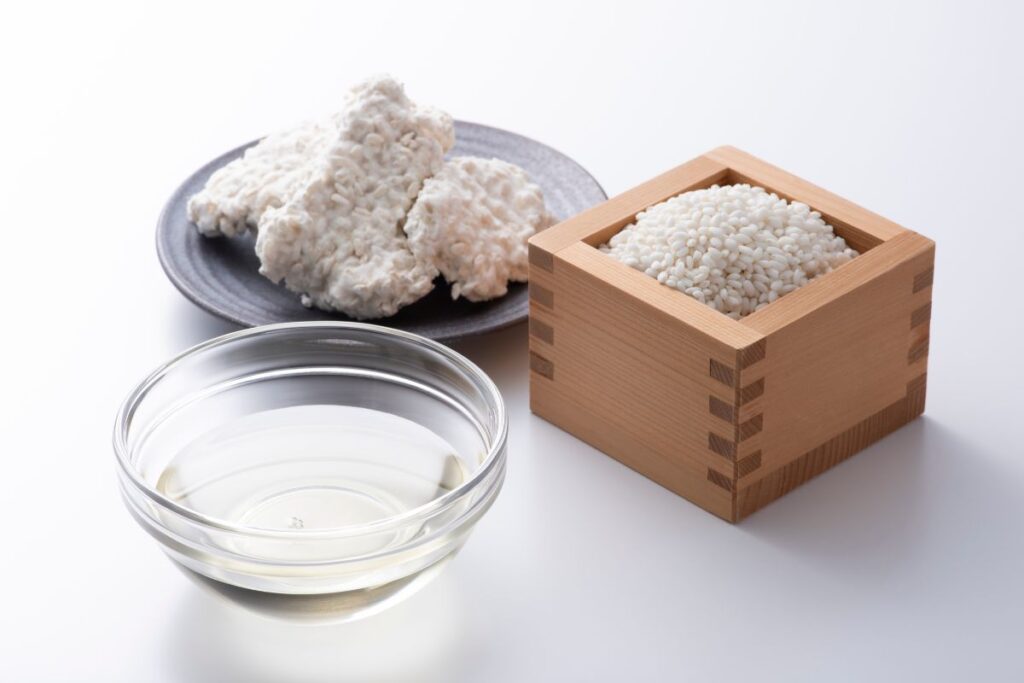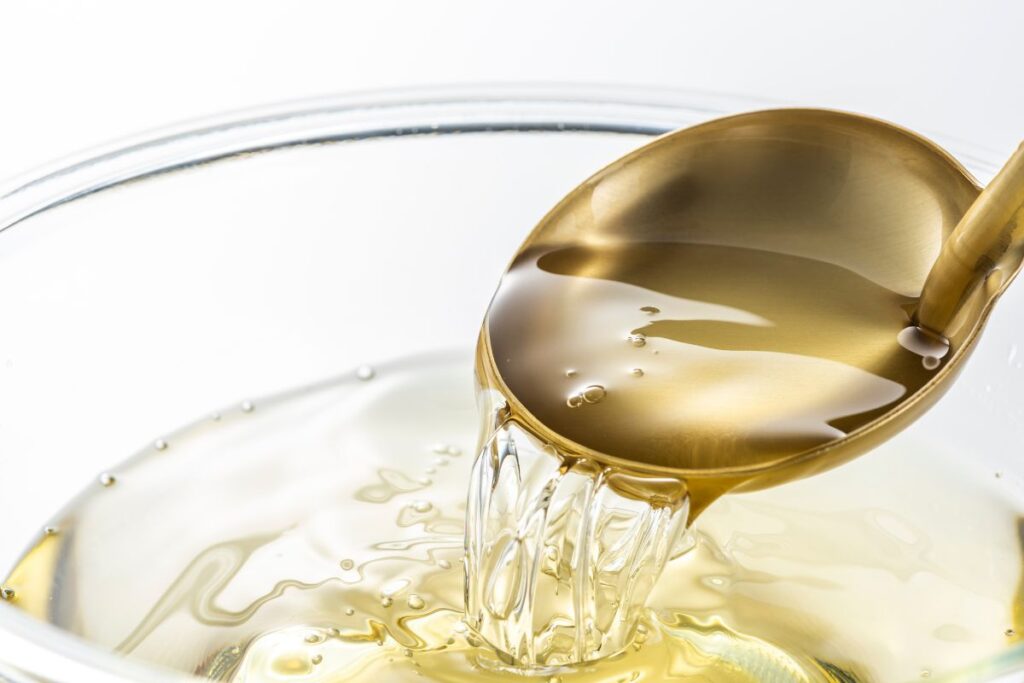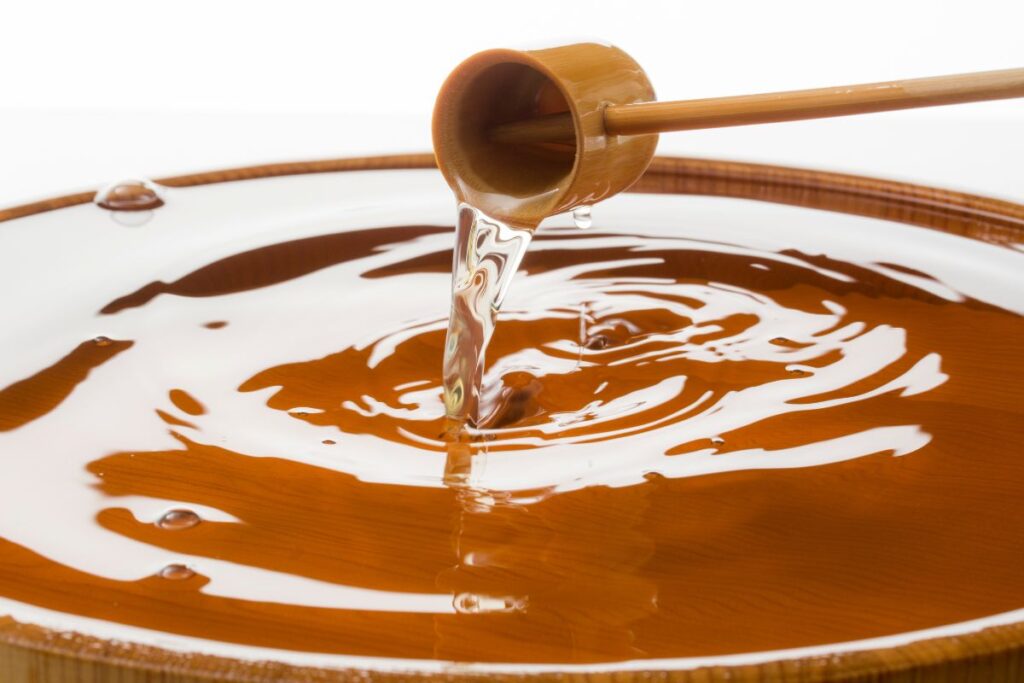Step into a traditional Japanese kitchen and witness the magic of mirin. Imagine the skilled chef delicately blending this sweet elixir into a simmering sauce, infusing the dish with a captivating depth that no other ingredient can match.
But mirin is more than just a sweetener; it’s a cultural treasure, with a history spanning centuries. You may already be familiar with its lustrous finish on teriyaki or its role in a savory miso glaze, but there’s so much more to discover.
Join us as we explore the origin, craftsmanship, and various types of mirin, uncovering the intricate flavors and rich traditions that have made it an essential component of Japanese cuisine.
Prepare to be captivated by the subtle complexities of mirin and learn how it can elevate your own culinary creations.
Get ready to unlock the secrets of this versatile ingredient, and you may find yourself reaching for mirin more often than you ever thought possible.
The Origins of Mirin
Mirin’s roots trace back to Japan’s Edo period, where it first emerged as a crucial ingredient in the country’s culinary landscape. You’re not just adding a sweetener to your dishes; you’re embracing a tradition that has seasoned Japanese cuisine for centuries.
This isn’t merely about taste—it’s about gaining mastery over the flavors that define some of the world’s most renowned dishes.
To truly harness the power of mirin, you need to understand its origins. It was initially a kind of drinking sake, enjoyed for its sweet flavor. However, as its culinary value became apparent, mirin found its place in the kitchen.
This transition wasn’t just incidental; it was a move that would redefine Japanese cooking, offering a balance of sweetness and depth to dishes.


Crafting Traditional Mirin
Understanding the historical significance of mirin, let’s now explore how this essential Japanese ingredient is made.
You’ll start with sweet rice, also known as mochigome, which is crucial for its higher starch content. First, steam the rice until it’s perfectly tender. This step is foundational; you’re aiming for the right texture to facilitate fermentation.
Next, you’ll introduce koji mold to the cooled, steamed rice. Koji, a beneficial fungus, initiates the conversion of rice starches into sugars, a critical phase in crafting traditional mirin.
It’s all about control here; maintain the rice under specific conditions to encourage the koji to work its magic efficiently.
After the koji has done its job, it’s time to mix in distilled liquor, usually shochu, which halts the koji’s activity and starts the aging process.
This blend is left to age, sometimes for years, to develop its depth of flavor. The longer it ages, the more complex and mellow the mirin becomes.
You’re in charge throughout this delicate process, from steaming the rice to aging the mixture. Crafting traditional mirin isn’t just about following steps; it’s about nurturing, patience, and a deep respect for the craft.
This hands-on approach ensures you produce a rich, authentic mirin that’s a testament to your dedication and skill.
Types and Varieties
As you delve into the world of mirin, you’ll discover it comes in various types and varieties, each with its unique flavor profile and culinary application.
Understanding these differences empowers you to select the perfect mirin for your dishes, elevating your cooking to new heights.
The first type you’ll encounter is ‘hon mirin,’ or true mirin, known for its complex, rich flavor. It’s the purest form, made traditionally and aged for months to develop its characteristic sweetness. If you’re aiming for authenticity in your Japanese cooking, hon mirin is your go-to.
Next, there’s ‘aji-mirin,’ which translates to ‘tastes like mirin.’ It’s a more accessible, less expensive option, offering a similar sweetness but with a lower alcohol content.
Aji-mirin works well for everyday dishes, providing the desired mirin flavor without overpowering the dish.
Lastly, ‘shio-mirin’ includes added salt, making it unsuitable for drinking but a great choice for cooking. Its salt content prevents it from being taxed as an alcoholic beverage, making it a budget-friendly option for those who still seek the mirin effect in their culinary creations.


Culinary Uses
Exploring the culinary uses of mirin opens up a world of flavor enhancement in Japanese cooking, from glazes to marinades. You’ll find that integrating this sweet rice wine into your dishes not only deepens their taste but also gives you control over the balance of sweetness and umami.
When you’re aiming to perfect your teriyaki sauce, mirin’s your go-to for that authentic, glossy finish. It’s not just about adding sweetness; it’s about unlocking a layer of complexity that elevates your cooking.
Consider using mirin in your next batch of sushi rice. Its subtle sweetness counteracts the vinegar, ensuring your sushi tastes just as it should. You’re in charge of the flavor profile, tweaking it to hit the perfect balance.
Moreover, mirin works wonders in soups and broths. A splash can transform a simple miso soup into a rich, nuanced bowl of comfort. You’re not just cooking; you’re crafting experiences.
Health Benefits
Mirin isn’t just a culinary delight; it also offers surprising health benefits that can enhance your wellbeing. This traditional Japanese sweetener isn’t merely about enhancing the flavors in your dishes; it’s packed with essential nutrients that can contribute positively to your health journey.
You’ll find that mirin is a good source of amino acids, which are the building blocks of protein. These compounds support muscle growth and repair, helping you stay fit and active.
Additionally, mirin contains moderate amounts of minerals like potassium, which aids in regulating blood pressure and ensuring your heart functions optimally.
Moreover, the fermentation process involved in making mirin results in the presence of beneficial enzymes. These enzymes can aid digestion, making it easier for your body to break down and absorb the nutrients from your meals.
This can lead to improved gut health and a reduction in digestive discomfort.
Conclusion
So, you’ve journeyed through the world of mirin, from its ancient origins to the art of crafting it traditionally. You’ve explored its various types and discovered its versatility in the kitchen.
Beyond adding a subtle sweetness to dishes, mirin brings its own health benefits to the table. But is there another side to this sweetener that we haven’t considered?
Do you have a different perspective on mirin? We invite you to leave a comment and share your thoughts. By engaging in conversation, we can deepen our understanding of this traditional Japanese ingredient and continue to explore its rich culinary possibilities.




Konnichiwa! (Hello!) I'm Pat Tokuyama, a Japanese tofu cookbook author, who travels for music, food, and adventure. If you like Japanese tea, checkout some of the newestorganic japanese tea, matcha bowls and noren and more!
** Curious about the Plant Based Japanese Cooking Club? ** Learn more here!